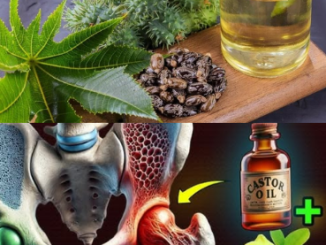
Understanding the Connection Between Dandruff and Acne
Dandruff and acne are two of the most common skin conditions, but most people don’t realize they can be connected. Dandruff isn’t just about an itchy, flaky scalp—it can actually have a direct impact on your skin. When dandruff flakes fall onto your face, forehead, or back, they don’t just disappear. Instead, they can mix with oil, sweat, and dead skin cells, leading to clogged pores. And clogged pores are the perfect recipe for breakouts.
So, if you’ve ever wondered why your forehead or back seems to flare up with pimples while dealing with dandruff, you’re not alone. Let’s break down the science, the myths, and the solutions so you can finally tackle both problems at once.
What Exactly Is Dandruff?
Dandruff is more than just flakes. It’s often the result of an overgrowth of Malassezia, a yeast-like fungus that feeds on the natural oils of your scalp. This imbalance can lead to irritation, inflammation, and flaking. Factors like dry weather, harsh hair products, or underlying conditions such as seborrheic dermatitis can make dandruff worse.
What Is Acne and How Does It Develop?
Acne develops when your pores get clogged with oil, bacteria, and dead skin cells. This can lead to blackheads, whiteheads, pimples, or even cysts. While hormones are often the biggest trigger for acne, external factors like dandruff flakes can make breakouts worse in specific areas.
Can Dandruff Really Cause Acne?
The answer is yes—dandruff can contribute to acne. When dandruff flakes fall onto your skin, they combine with your natural oils and create a sticky buildup that clogs pores. This is especially common along the hairline, forehead, and even on your back if you have longer hair. Once the pores clog, bacteria multiply, causing redness and pimples.
But remember—dandruff isn’t the only culprit. Acne can also be triggered by dry skin, excessive oil production, hormones, and even genetics. Still, if you’ve noticed your breakouts align with dandruff flare-ups, it’s a strong sign that the two are linked.
Video : Did you know dandruff can cause acne? 😲
Back Acne and Dandruff: Is There a Connection?
If you’ve dealt with “bacne,” you know how frustrating it can be. Dandruff can make it worse, especially if flakes fall onto your back and mix with sweat and oils. Add in tight clothing or skipping a shower after working out, and your pores don’t stand a chance. The result? Painful, stubborn back breakouts.
Forehead Acne and Dandruff Flakes
Your forehead is one of the most common places to see dandruff-related breakouts. Why? Because flakes naturally fall along your hairline and onto your forehead, especially if you have bangs. These flakes act as debris, clogging pores and causing pimples. If your forehead is the only spot breaking out, dandruff could be to blame.
Do Hormones Play a Role in Both?
Yes—hormones are often the missing link. Hormonal shifts, like during puberty, menstruation, or stress, increase oil production in both the scalp and skin. This extra oil creates a perfect environment for dandruff and acne to thrive. It’s a double-edged sword: your scalp gets flaky, and your skin breaks out.
How to Get Rid of Acne Caused by Dandruff
- Switch to an anti-dandruff shampoo with active ingredients
Look for shampoos that contain Piroctone Olamine, Nasturtium Officinale, or Arctium Majus Root Extract. These don’t just reduce dandruff—they also calm scalp irritation and limit fungal growth, helping to cut off the problem at the source. - Add a scalp serum or lotion
Products with tea tree oil, aloe vera, zinc pyrithione, or piroctone olamine can soothe your scalp and reduce flakes. The less dandruff, the fewer chances of clogged pores. - Use the right face wash
Choose a gentle cleanser with Zinc PCA or Cocamidopropyl Betaine. These help regulate oil, calm redness, and keep your skin hydrated while preventing new breakouts.
Precautions to Prevent Dandruff-Related Acne
- Keep it clean: Wash your hair and face regularly with mild, non-comedogenic products.
- Hands off: Avoid touching your face or scratching your scalp, since this can transfer flakes and oil.
- Shower after sweating: Exercise and sweat create the perfect environment for clogged pores if flakes are already present.
- Choose loose clothing: Let your skin breathe to reduce sweat and oil buildup.
- Check your products: Always go for non-comedogenic hair and skin products that won’t clog pores.
Video : Dandruff Causes pimples?
The Takeaway
Dandruff and acne may seem like two different issues, but they’re often connected. Flakes from your scalp can trigger clogged pores, especially on your forehead and back, leading to frustrating breakouts. The good news? By treating dandruff with targeted shampoos, serums, and gentle skincare, you can reduce both dandruff and acne at the same time.
Clear skin doesn’t just start with your skincare—it starts with your scalp. By managing dandruff properly, you not only protect your scalp health but also give your skin the fresh, breakout-free look it deserves.


